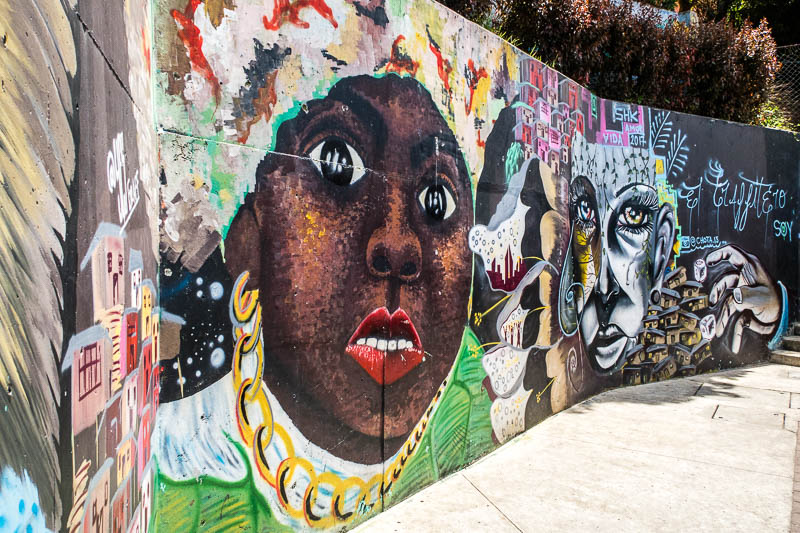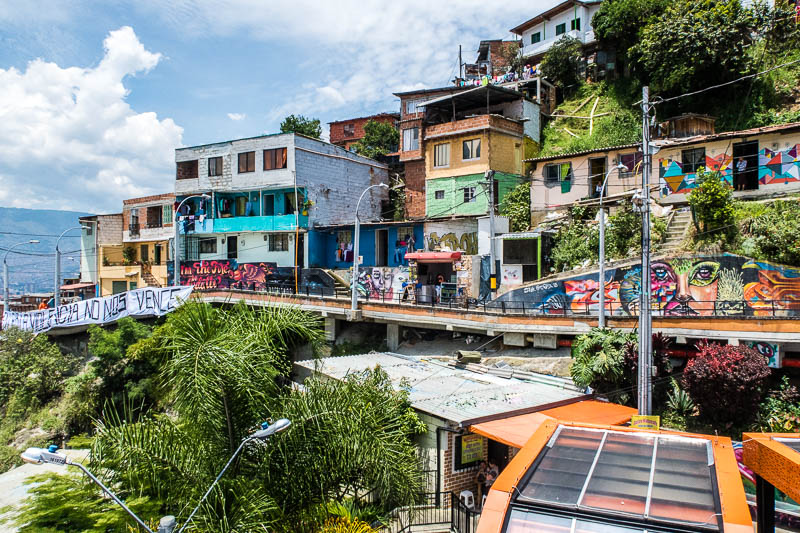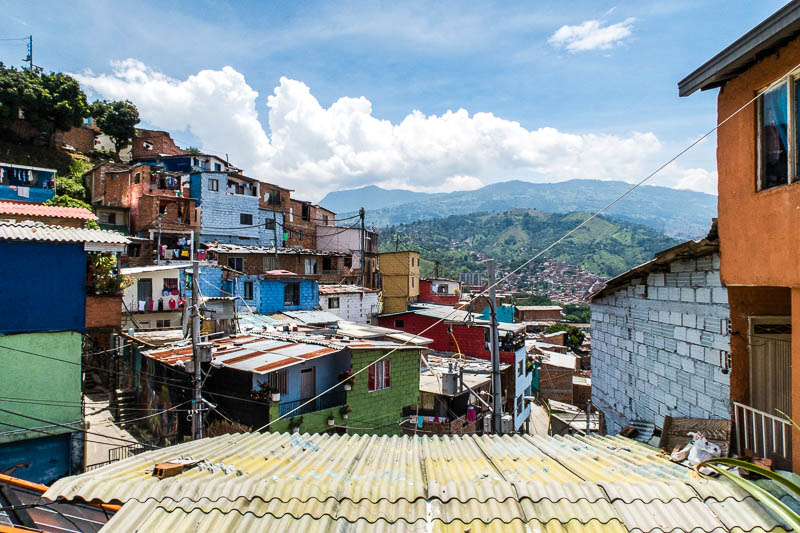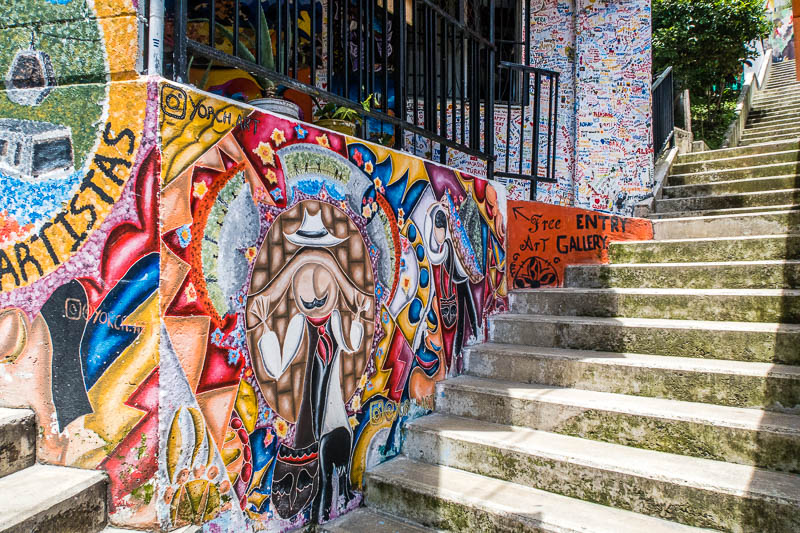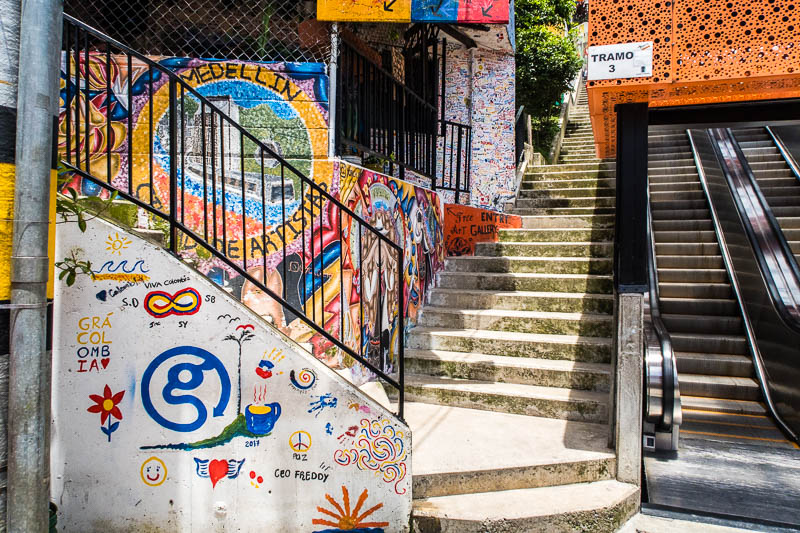MEDELLIN | In the 1980s and 1990s, Colombia was the heart of the world’s cocaine trade, and the city of Medellin was considered by many to be “the most dangerous city in the world”. Pablo Escobar, head of the infamous Medellín drug cartel, at one time controlled more than half of the US cocaine trade, making him so wealthy that Forbes magazine placed him as the seventh richest person in the world in 1989.
Escobar controlled this city where drug lords did what they wanted, and police were either in the pockets of the drug lords or assassinated, as were politicians and business leaders who didn’t play ball. Of all the neighbourhoods in Medellin, perhaps the most notorious was Comuna 13, or San Javier as it’s officially known. The low socioeconomic neighbourhood was a hotbed of guerrilla, paramilitary, and gang activity, and was the one time murder capital of the world. Of course, there were also plenty of regular folks just trying to get by.
I visited Comuna 13 as part of a Pablo Escobar tour. Not a tour like some that try to glorify his image and life, but one that tries to give a true sense of the terror that he sewed. You can read about that experience here, but for now, more about Comuna 13. Pablo Escobar controlled this strategically important neighbourhood. Its location, close to the San Juan Highway, made it ideal for smuggling contraband, while its layout meant that it was virtually impossible for people such as police and rival gangs to enter the neighbourhood without being spotted. Poverty, meanwhile, meant that Escobar could offer opportunities to those who had been left behind by the government and society.
After Ecobar’s death in 1993, there was a power vacuum in the area which was filled by fighting left-wing guerillas, right-wing paramilitary groups and combos (local street gangs). This was the period in which Comuna 13 attained the sobering distinction of being the murder capital of the world.
In 2002, the government was done with the violence and commenced Operation Orion. They allied with the paramilitary and, with the aid of air strikes, performed a full on assault on the neighbourhood. I was enjoying coffee at a cafe in the neighbourhood and the owner, who had lived through it all, showed me a book of photos from that time, four days to be precise. It resembled a war zone. Officially the death toll topped out at 11, but hundreds of residents are to this day unaccounted for. After the assault, the paramilitary were unofficially allowed to control Comuna 13, and the violence continued until a truce between rival gangs was called in 2013.
Today, Comuna 13 is still a poor neighbourhood, but it’s a neighbourhood with a sense of hope, a future. It’s also safe enough for tourists to visit, with local guides helping to share the story of the neighbourhood and its people with visitors. The story of the people and this neighbourhood is one of struggle, hope and perseverance.
When you first enter Comuna 13, you’re greeted by a long mural that tells the story of the almost daily shootings that took place in the area. An eagle, an owl and three elephants protect the community, holding up white flags letting those that enter know that Comuna 13 is now a place of peace. The old woman at the end of the mural is an actual person, who stood up to the army and guerilla fighters that overran the neighbourhood, while the panda represents the child victims of the violence.
Street art is everywhere here. It started as a way for the frustrated youth of the area to express themselves. Today many pieces have been commissioned by the government, allowing artist to make some money for their efforts. Through this medium, local artists share the area’s troubled past and promising future, and tell those visiting what Comuna 13, Medellin, and Colombia means to them. There are stories of pain and sacrifice, sadness and joy, love, peace, and hope.
Another thing you notice is that the neighbourhood is colourful. Along with street art, many of the houses are painted in bright colours, and have roofs. A world away from the drab grey, often roofless places I saw in the photos I was shown from the 1990s.
There are opportunities for people in Comuna 13 now. In large part it’s due to the local government’s construction of affordable public transport connecting the neighbourhood to vital education and employment hubs in the city, and of a determination to make education accessible to all. Children walk to and from school and play in the comuna’s playgrounds safely, and residents sell food, drink, and goods made by local artisans. A large, free outdoor escalator, meanwhile, allows residents to navigate the steep neighbourhood with ease. What was a tough 35 minute hike is now a quick six minute escalator ride.
There’s still a lot of work to be done to raise the comuna’s residents out of poverty and raise their living standards, but at least there’s hope. So much has already changed in the past decade, and unlike in the past, the people feel like things are going to keep getting better.













